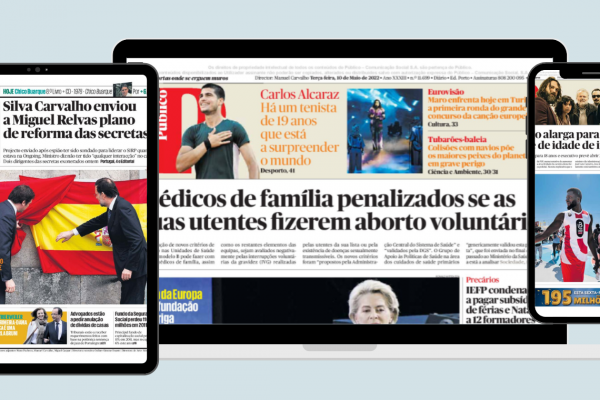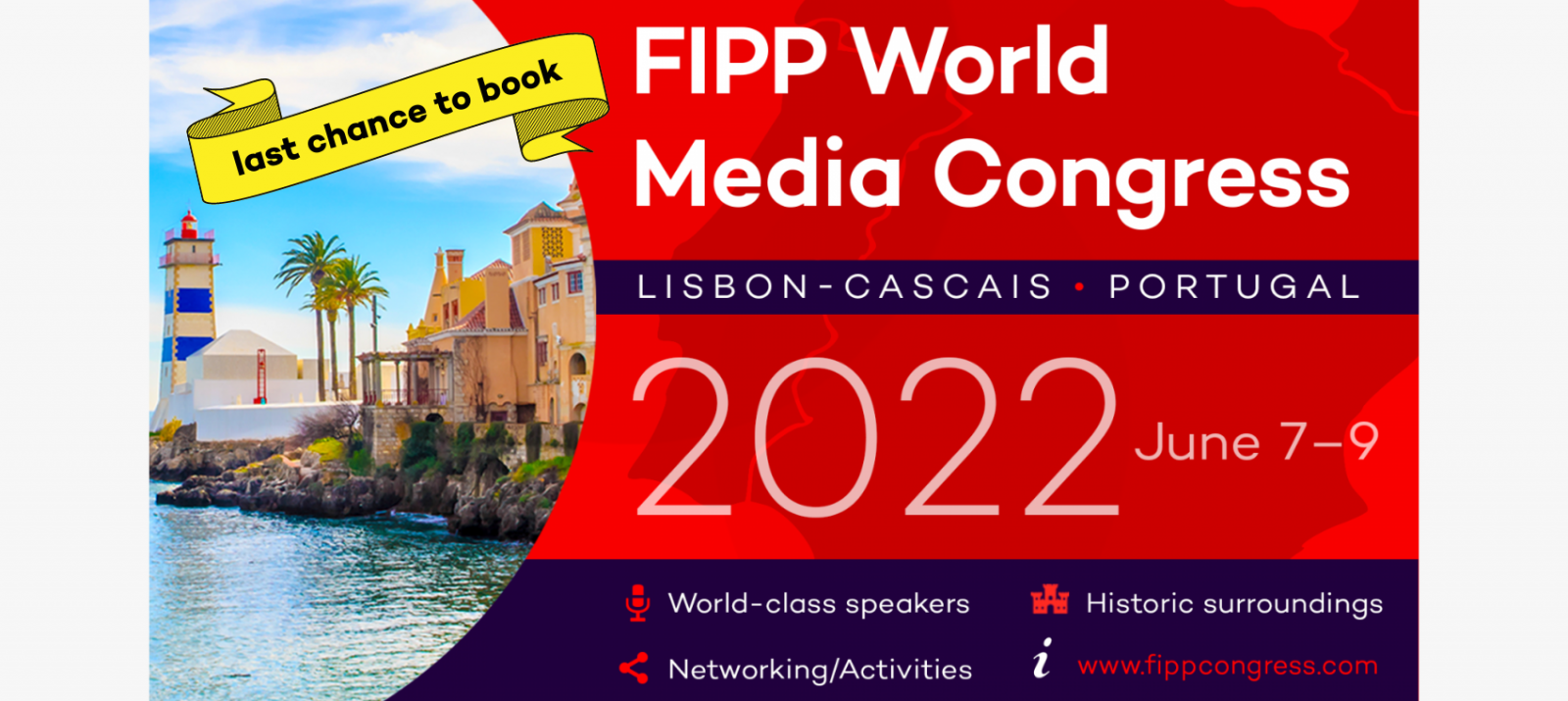Technology can unlock growth: Guida Marques Pinto, Digital Innovation Director at Público, Portugal, on the paper’s digital transformation
“We are living in the ‘subscription addiction’ era. Inspiration might come from a toothbrush or a guitar rental company. What I find most inspiring is the way some subscription companies strategically build communities and promote the membership economy.”
The digital transformation of the media is not a one-off event. It is an ongoing process that is constantly presenting new challenges.
Guida Marques Pinto, the Digital Innovation Director at Público, Portugal’s leading quality newspaper, has spent the last two years leading the media company’s digital renewal. She is someone who sees innovation, powered by technology, as the key to digital success. Yet what does that mean in practice?
At next month’s FIPP Congress, which is hosted in her own country, Guida will outline in more depth how Público has harnessed technology to drive and establish new business models. Here she explains why Público is thriving digitally while maintaining a strong presence in print, and how inspiration to innovate can emanate from the unlikeliest of places.
Part of our: Meet the Speaker Series
Guida Marques Pinto, Público
Tell me a bit about yourself. What was your journey to your current role at Público?
I am Guida Marques Pinto and I have been the Digital Innovation Director at Público since March 2020. Yes, that March. Prior to Público I had worked seven years at Global Media Group here in Lisbon in a number of digital roles: PMO, innovation coordinator and e-commerce director. Before that I spent several years in the retail and construction sectors, mostly abroad, between Spain, China and the UK, where I completed my MBA at Imperial College. Recently I became a board director at the European office of INMA (International News Media Association).
And can you give a bit more information about Público and also what your roles and responsibilities are?
Público was founded in 1990 and is the country’s preeminent high-quality national daily newspaper in both online and in print. The company boasts about 200 people in our Lisbon and Porto offices, who are working to guarantee our top-notch journalism reaches the audiences in Portugal and abroad. Fundamental to Publico’s DNA is the innovation drive it has had since its foundation. This impacts all fronts of the company, but especially regarding reader’s needs and the way we work. And this innovation was key to our amazing growth during the pandemic. In that sense, I have the easiest job in the world.
The challenge is guaranteeing that the innovation drive is efficiently applied to our North Star goal and outcomes, aligning the voice of client, voice of market and voice of business. As Digital Innovation Director I am in charge of strategic digital projects. This encompasses mostly long-term funds and programs, business and tech benchmarks in and outside our sector, innovative methodologies and frameworks and its integration in our governance.
More generally, what is the current media landscape in Portugal and where does Público fit in?
These are odd times. On the one hand Portugal has the highest rate of trust in news in Europe, only behind Finland. On the other hand we are one of the countries mostly concerned about the financial state of our news organisations. As in most countries in Europe and elsewhere, digital business in media in its various forms is trying to replace the failing in print and advertising revenue models. Público now has three times more readers buying content online than those who buy our print version. And although Público was the daily newspaper that had the smallest decrease in its stand sales, 2020 and 2021 were particularly harsh in Portugal’s publishing media sector with some other companies being forced to assume radical restructures or even layoffs.
The good news is that people are willing to pay for online news in Portugal and this number has been consistently growing in the last few years. And we are the newspaper that has had the biggest increase in online subscriptions and total paid content. There are many reasons for this but we proudly believe it has very much to do with the loyalty and engagement levels (i.e visits per user, visit frequency and volume, time on site) that are the result of our outstanding journalism.
“Two variables balance things out a bit: the early adoption of new technologies by the Portuguese people and the high trust in news outlets of excellence such as Público.”
How does your subscription model work? Where does it sit in your list of key revenue sources?
We currently run a hybrid subscription model in our site and app, with both a metered and a freemium paywall. Revenue wise it is becoming central to our sustainability with a growing ARPU that’s superior to the other business solutions we have in place.
Do you think operating in a smaller country makes it easier or more difficult to run a successful subscription system for a media company?
Most digital businesses rely on scale so the immediate answer would be that it makes it more difficult. There are Portuguese language readers around the world, but cultural differences cause us issues. There are however two other variables that balance things out a bit, and that’s the early adoption of new technologies by the Portuguese people and the high trust in news outlets of excellence such as Público.
Which other subscription systems across the globe inspire you?
Obviously one always looks at the big sharks and often comes back to the office after an event such as FIPP Congress and day dreams of much of what is happening elsewhere. I vividly remember seeing a Globo presentation about business innovation at an INMA event years ago and still know most of the presentation by heart because it was so groundbreaking and visionary in what was about to happen in the following years: people, business and product-wise.
But I am always very inspired by smaller independent brands around the globe and also in Portugal, such as Fumaça, Mensagem de Lisboa or Mapa, who are brave enough to promote innovation in both editorial and business sides, testing models that enhance the journalistic cause while challenging the market status quo. However as we are living in the “subscription addiction” era, inspiration nowadays might come from a toothbrush or a guitar rental company. What I find most inspiring is the way some subscription companies strategically build communities and promote the membership economy. The cause and the belonging effect.
Are there any other ways that Público is innovating?
Yes, as always. We have just launched Azul a few days ago, a project dedicated to premium and reliable sustainability content, for which we have tested reader revenue models, interactive formats and some new features. Our reader-centric strategy is also driving innovations that we will present at the end of the year. Some are happening on the front-end but most are behind the visibility line: experience personalisation, propensity models, operational automatisation, experimentation in all Publico’s departments, web sustainability, interactive teamwork tools, etc.
Where do you think Público will head in the coming years? What technologies will enable this?
All things dynamic: paywall, product, pricing, omnichannel distribution. Working for the segment of one, narrow and deep. We have been digging into various technologies to sustain our North Star strategy and AI is the one at the more advanced stage. Whereas for blockchain, NFTs, and cryptocurrencies, as with several other technologies in the past, we will have to go through a process of trial and error to determine their relevance.
? To see the latest speaker line-up for this June’s FIPP World Media Congress, along with details of the schedules, click here.










